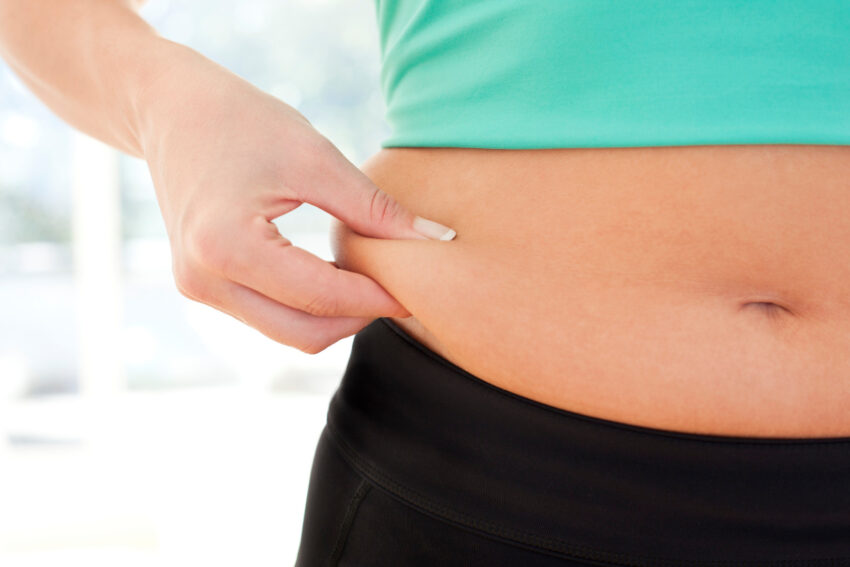Are you curious about your body fat percentage but don’t want to go through the hassle (and expense) of visiting a professional or getting a DEXA scan? Luckily, there are a few methods you can use to measure your body fat at home.
3 Easy Methods to Measure Body Fat at Home
Body Fat Calipers
One popular method is using a body fat caliper. This device measures the thickness of a fold of skin and the underlying layer of fat. To get an accurate body fat measurment, it’s important to follow the instructions carefully and take measurements at multiple sites on the body.
Types of Calipers
There are different types of calipers like cheap plastic ones and metal ones with digital displays. Cheap plastic calipers are honestly fine and you can get them for $10 or less on Amazon.
Accuracy of Calipers
As someone who gets a DEXA body fat scan every 3 months, I can speak to the general accuracy of inexpensive calipers. I use a cheap plastic pair and they are within 1% of the body fat reading I get from my DEXA scan. For example, My DEXA scan from May read I am at 18.9% body fat and my calipers read that I am at 17.8%. Then later in August, my DEXA scan read 15.9% and my calipers read 14.9%.
BIA Devices
Another common method is using a bioelectrical impedance analysis device. These devices work by sending a small electrical current through the body. The resistance to this current is used to estimate body fat percentage. These devices are generally considered to be accurate, but they can be affected by factors like hydration levels.
Types of BIA Devices
You can find BIA devices in some higher-end bathroom scales. When you stand on the scale with bare feet it sends bioelectrical impedance through your feet and up through your body. There are also handheld devices that you grip with your hands that send bioelectrical impedance through your hands and arms to estimate your body fat.
Accuracy of BIA Devices
In my experience, a scale does a better job of estimating your body fat in your lower abdomen and legs. A hand-held device does a better job estimating fat in your arms and upper torso. To get a more accurate read, the best type of BIA device is a scale you stand on that also has a device you can hold. Then you will get a more accurate picture of your body fat throughout your body.
Another observation I have around BIA devices as a method to measure body fat is they aren’t as accurate as calipers. For example, My DEXA scan read I am at 15.4% body fat and my calipers read that I am at 14.9% body fat. Within the same 30 min of those readings, my BIA device said I am at 11.2% body fat (and by the looks of my physique I am not).
However, when I lose body fat the BIA device reduces at the same rate as the other measuring techniques. So when the DEXA scan said I was 15% body fat, the BIA said I was 10.8% body fat. While the BIA measurement is inaccurate, the trend of increase and decrease is accurate.
Waist to Hip Ratio
There is another DIY method you can do at home, which requires only a body tape measure. This method involves measuring the circumference of the waist and hips and dividing the waist measurement by the hip measurement.
The waist-to-hip ratio, or WHR, is a quick and easy way to measure how much fat someone has on their body. This method may help indicate a person’s overall health. It is not quite the same as getting your body fat percentage, but understanding if your distribution of fat is healthy or not.
Low Health Risk
- Women: 0.80 or lower
- Men: 0.95 or lower
Medium Health Risk
- Women: 0.81-0.85
- Men: 0.96-1.0
High Health Risk
- Women: 0.86 or higher
- Men: 1.0 or higher
For example, my waist is 31 inches and my hips are 35 inches. 31/35= .88. That is a low health risk which makes sense as I maintain a strict diet and exercise 5 days per week.
More Accurate Methods Require Better Tools
Measuring body fat at home is great to get a ball park number on your body fat percentage and it is convenient. For more accuracy, you will need to spend a little money and leave the comfort of home. The two most accurate ways to measure body fat are with a DEXA scan or via Hydrostatic Weighing.
At a minimum you will spend between $50 to $100 each time you want a measuremnet. The upside though is you will get a much more accurate picture of your fat percentage.
Methods to Measure Body Fat at Home – Conclusion
Keep in mind that these methods are estimates and they may not be completely accurate. However, they can give you a general idea of your body fat percentage. If you’re concerned about your body fat percentage, it’s best to speak to a doctor or nutritionist.
